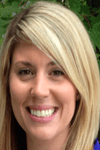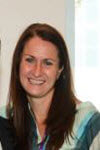By: Cate Murray | Updated: 2016-07-21 | Comments | Related: More > Professional Development Resume
Problem
Many struggle when writing a resume because they lack a strategy for framing their relevant experience in the best possible way, and making modifications depending on roles they apply for, and additions throughout their career. Therefore, we’ve aligned some resume best practices with the Software Development Life Cycle model!
Solution
We’ve applied the SDLC approach to the resume process, which can be a methodology you utilize to ensure the key details of your professional life stand out to prospective employers on your resume!
1. Requirements Gathering - When most candidates enter the job market, they often don’t know a) the skills they possess that are “in demand” by organizations and/or b) the technologies and skills relevant to their skill set that clients are starting to seek candidates with! Therefore, it’d be worthwhile to engage in some “skills insight requirements gathering” to determine what to highlight and consider learning by:
- Listening to technical trends podcasts
- Reviewing job descriptions and capturing any technologies you see multiple companies requesting
- Reading trends insights such as ThoughtWorks Technology Radar
- Asking local, tenured Recruiters a question like “What technologies and skills are your clients starting to seek from SQL Server Professionals?”
- Consulting with others in your network and members of your local user group on “What technologies are your companies considering implementing? Which ones have they started using over the last 6-12 months?”
2. Analysis - Once you’ve captured the information/ “requirements,” write a list of your skills, technologies, experience, certifications, training, etc. that are relevant to “industry demand!” Identify the top 2-3 skills that would be helpful for you to start to develop a knowledge base with. For example, if most companies are using SQL Server 2014 and you have experience with 2012, it’d be good to invest at least 2 hours a week in taking SQL Server 2014 training.
3. Development - Now it’s time to actually “create your product!” Keep the analysis and reflection that you did in step 2 in mind when drafting your resume. For example, if a local Recruiter told you they’ve seen an increase in clients requesting a specific certification and technology, and you have both of those, put the certification next to your name at the top of your resume and ensure the technology stands out at the top of the list of your ‘Technical Skills Summary.’ If you’ve taken SQL Server 2014 training, add the courses you’ve taken to a ‘Training’ section.
4. Quality Assurance - No product should ever get implemented without thorough QA! As we’ve discussed in other tips, make sure you have your own quality assurance process for every important product. Below is an example process, but some components of your QA process could include: reading out loud to yourself to ensure everything flows, printing out and reviewing, looking at 1-2 days after you’ve written your resume, and consulting with others. With a product this important, always use spellcheck and have at least one other pair of eyes you trust do a review!
When you ask a trusted person in your network to review, ask them questions that will provide you with suggestions on how to make it a better product! Here are some example questions:
- Is it too wordy / lengthy?
- What could I do to improve formatting?
- Am I missing any major categories/sections?
- Do my accomplishments stand out?
- Is there any information that should be moved to the first page?
- Are the primary technologies, versions, tools, etc. I’ve worked with clear at first glance?
- What stood out to you in the first 8-15 seconds?
- Are the tasks and responsibilities I’ve had in my last few positions clear?
- Am I missing any other non-work experience that would be worth adding?
Example Resume Quality Assurance Process:
5. Implementation - Start sharing your resume via effective channels that could produce relevant job leads. You can send to Recruiters you’ve enjoyed working with in the past, post via a reputable job board, send to a local SQL Server User Group leader to see if they can distribute to trusted Recruiters and companies who might be hiring, and apply for job postings.
6. Enhancements/Customization - We don’t believe any product is ever perfect, your resume included! Therefore, capture feedback real-time when you see opportunities to do so, and enhance your resume accordingly! Also, taking a few minutes to customize your resume depending on the positions you’re applying for is well worth the time. Review the list of requirements for each position you apply to, and ensure your resume reflects all relevant experience you have with those, and that the primary skills/technologies they’re seeking stand out!
Next Steps
Again, we’ve applied the software development life cycle to the resume writing process, where before you start building the product, you engage in your own:
- Requirements Gathering - What skills are in demand? What are companies starting to implement?
- Analysis - What skills do I have which are in demand? What 1-2 skills should I learn to give me a competitive advantage and make me more marketable? How should I structure my “product?” What categories should I include? How can I emphasize key skill sets I have?
- Development - Outline and build your product!
- Quality Assurance - Does my resume clearly highlight the skills I have which companies are seeking candidates with? Did I do a thorough review? Did I have at least one trusted peer/friend/recruiter who understands my skill set and market trends review?
- Implementation - Where should I share my resume? Who in my network should I reach out to? What job boards should I sign up for alerts on? What are 2-3 large and reputable technical staffing firms in the area I should reach out to? Who are 1-2 Recruiters I’ve had a positive experience working with who I should re-engage? Did I ask any friends/previous co-workers who’ve recently started a new job for Recruiter or Company referrals and/or for additional job search advice? Are there any community leaders I should consult with on recommendations?
- Enhancements/Customization - What should I include for the particular role I’m applying for? What else should be highlighted? Am I updating my resume based on any quality suggestions I’ve received?
Again, we recommend investing at least 1-2 hours a week to learning the skills that could increase your marketability; that should be part of your job search strategy!
Doing this ‘Resume Development Life Cycle’ process can also be a helpful exercise for effectively delivering your ‘Professional Elevator Pitch’ during interviews, and for answering common interview questions such as “Tell me about yourself.”
About the author
|
Erica Woods has nearly a decade in the IT staffing world, an MBA,
and is a member of the Professional Association of Resume Writers
and Career Coaches.
|
About the author
 Cate Murray is responsible for managing the nationally-based talent acquisition strategies of the Apex Systems PMO and Business Analysis Practice and holds her PMP certification from PMI.
Cate Murray is responsible for managing the nationally-based talent acquisition strategies of the Apex Systems PMO and Business Analysis Practice and holds her PMP certification from PMI.This author pledges the content of this article is based on professional experience and not AI generated.
View all my tips
Article Last Updated: 2016-07-21







